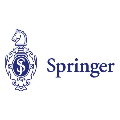Consensus protocols have traditionally been studied in a setting where all participants are known to each other from the start of the protocol execution. In the parlance of the 'blockchain' literature, this is referred to as the permissioned setting. What differentiates Bitcoin from these previously studied protocols is that it operates in a permissionless setting, i.e. it is a protocol for establishing consensus over an unknown network of participants that anybody can join, with as many identities as they like in any role. The arrival of this new form of protocol brings with it many questions. Beyond Bitcoin, what can we prove about permissionless protocols in a general sense? How does recent work on permissionless protocols in the blockchain literature relate to the well-developed history of research on permissioned protocols in distributed computing? To answer these questions, we describe a formal framework for the analysis of both permissioned and permissionless systems. Our framework allows for "apples-to-apples" comparisons between different categories of protocols and, in turn, the development of theory to formally discuss their relative merits. A major benefit of the framework is that it facilitates the application of a rich history of proofs and techniques in distributed computing to problems in blockchain and the study of permissionless systems. Within our framework, we then address the questions above. We consider the Byzantine Generals Problem as a formalisation of the problem of reaching consensus, and address a programme of research that asks, "Under what adversarial conditions, and for what types of permissionless protocol, is consensus possible?" We prove a number of results for this programme, our main result being that deterministic consensus is not possible for decentralised permissionless protocols. To close, we give a list of seven open questions.
翻译:在传统上,共识协议在自执行协议之初就为各方所熟知的环境下研究。 在“链链”文献中,这被称为允许的设置。 Bitcoin 与这些先前研究过的协议有何区别? Bitcoin 与这些协议的区别在于它是如何在不受允许的环境下运作的,即它是一个在未知的参与者网络上达成共识的规程,任何人都可以加入,具有同样多的身份,这种新形式的协议的到来带来了许多问题。除了Bitcoin之外,在一般意义上,我们能够证明不允许的协议是什么? 在“链”文献中,关于无许可协议的最新工作是如何与在分配计算过程中的许可协议研究历史密切相关的? 为了回答这些问题,我们描述了一个分析允许和不允许的系统的正式框架。 我们的框架允许对不同类别的协议进行“申请和申请”的比较,反过来,理论的发展可以正式讨论它们的相对优缺点。这个框架的主要好处是,它能促进在“规则”的近距离历史中应用证据和技术类型的结果如何?





